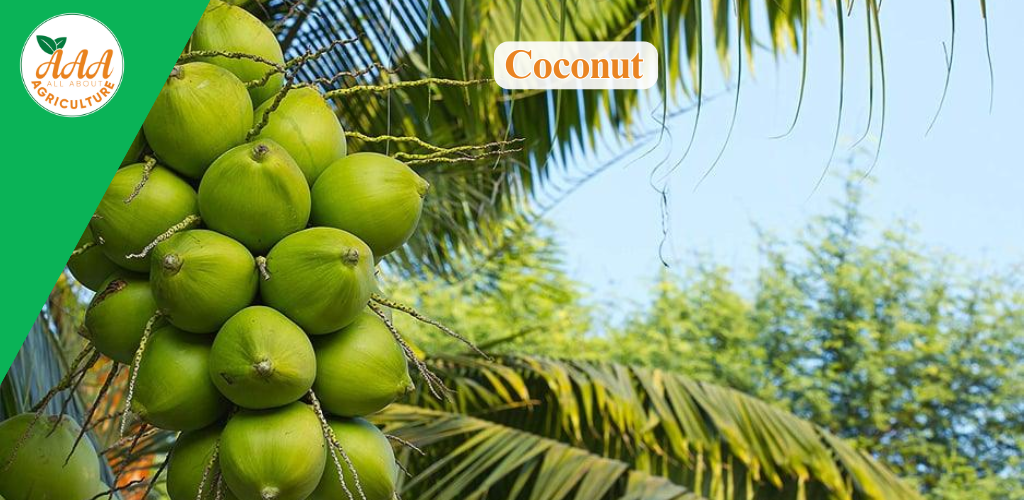COCONUT
COCONUT (Cocos nucifera L.)

Origin: South East Asia and Melanesia
Botanical Name: Cocos nucifera
Family: Arecaceae
➤ Soil
Coconut thrives best in deep, well-drained sandy loam soils with good water holding capacity and rich in organic matter. The ideal pH is between 5.5 to 7.5. Avoid waterlogged, saline, or extremely acidic soils. The presence of laterite or hard pan near the surface restricts root growth and affects productivity.
➤ Climate
A tropical plant that prefers hot and humid climates. Optimum temperature is 27–32°C with annual rainfall of 1000–3000 mm. A well-distributed rainfall and bright sunshine throughout the year favor high yield. Susceptible to frost and cold.
➤ Varieties
Tall types (West Coast Tall, East Coast Tall), Dwarf types (Chowghat Orange Dwarf), and Hybrids (Kera Sankara, Chandra Sankara).
➤ Propagation
Mostly propagated through seeds (nuts). Select fully matured and healthy nuts (10–12 months old) for raising seedlings. Transplant seedlings when they are 8–10 months old and have 6–8 leaves.
➤ Planting
Spacing of 7.5 x 7.5 m in square system (for tall varieties), pit size of 1m x 1m x 1m filled with topsoil and compost. Best planting time is during the monsoon season.
➤ Irrigation
Requires consistent moisture. In areas with less rainfall, irrigate every 4–7 days. Drip irrigation is highly effective and water-saving.
➤ Manuring & Fertilization
Apply 500 g N, 320 g P₂O₅, and 1200 g K₂O per palm per year. Apply organic manures (like compost or farmyard manure) during the monsoon. Split doses for better uptake.
➤ Intercropping
Legumes, banana, and pineapple are ideal intercrops during early years. Coconut-based farming systems increase income and soil health.
➤ Pests & Diseases
Key pests: Rhinoceros beetle, Red palm weevil, Black-headed caterpillar.
Diseases: Stem bleeding, bud rot. Use pheromone traps, biocontrol, and neem-based products for management.